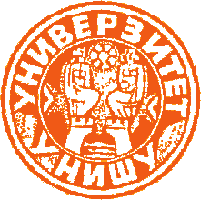Bogomils, Cathars, Lollards and the High Social Position of Women During the Middle Ages
Bogomils, Cathars, Lollards and the High Social Position of Women During the Middle Ages
Author(s): Georgi VasilevSubject(s): History
Published by: Универзитет у Нишу
Summary/Abstract: The subject of this study is the special social and cultural status of woman obtained in the milieu of dualistic heresy. The Bogomilisme which appearance was at Xth century in Bulgaria allowed to women to preach in vernacular, to read the Holy scriptures, esp. the New Testament. That was practically an acces to the Word, to the creativeness. One can appreciate this unusual acquisition by the fact that in the Middle Ages in France, in all Western Europe it was forbiden to preach in native language - the Church services and sermons was practiced only in latin. In England such prohibitions were actual till XVIth sentury. The result of the innovation of the heretics was the rise of a unique protorenaissance culture in Provence /South France/, in which woman received special attention. The troubadours sang prise of woman, that was also the time of the frist poetesses /trobaritz/, precursors of the modern women poetry. In England women lollards are very active in the literary occupations of the lollardy. The author applies a socilogical approach to this situation of religious and cultural emancipation of woman. That is a possibility to outline more clearly the phenomenon of the self-realization of woman in the counter-culture of the dualist heresy carrying out some comparisons with some attitudes of the contemporary feminism.
Journal: FACTA UNIVERSITATIS - Philosophy, Sociology, Psychology and History
- Issue Year: 2000
- Issue No: 07
- Page Range: 325-336
- Page Count: 12
- Language: English

